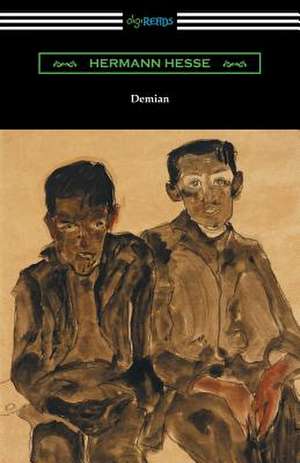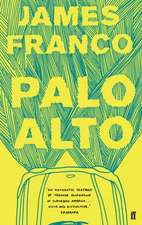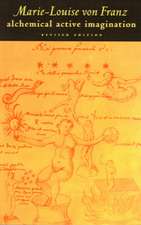Demian: (Translated by N. H. Piday)
Autor Hermann Hesse Traducere de N. H. Pidayen Limba Engleză Paperback – 8 iun 2018
| Toate formatele și edițiile | Preț | Express |
|---|---|---|
| Paperback (9) | 53.33 lei 43-57 zile | +6.68 lei 5-11 zile |
| Pushkin Press – 29 feb 2024 | 62.84 lei 22-36 zile | +6.68 lei 5-11 zile |
| HarperCollins Publishers – 7 sep 2009 | 82.04 lei 22-36 zile | |
| Penguin Books – 29 iul 2013 | 82.49 lei 22-36 zile | |
| Digireads.com – 31 dec 2012 | 53.33 lei 43-57 zile | |
| AZILOTH BOOKS – 20 feb 2017 | 53.76 lei 43-57 zile | |
| Neeland Media – 8 iun 2018 | 59.05 lei 43-57 zile | |
| www.bnpublishing.com – 23 oct 2008 | 69.84 lei 43-57 zile | |
| General Press – 31 dec 2017 | 95.89 lei 43-57 zile | |
| Martino Fine Books – 17 mai 2011 | 121.54 lei 38-44 zile | |
| Hardback (3) | 158.77 lei 43-57 zile | |
| www.bnpublishing.com – 15 sep 2010 | 158.77 lei 43-57 zile | |
| Martino Fine Books – 13 noi 2021 | 181.89 lei 38-44 zile | |
| General Press – 2018 | 195.99 lei 43-57 zile |
Preț: 59.05 lei
Nou
Puncte Express: 89
Preț estimativ în valută:
11.30€ • 12.28$ • 9.50£
11.30€ • 12.28$ • 9.50£
Carte tipărită la comandă
Livrare economică 21 aprilie-05 mai
Preluare comenzi: 021 569.72.76
Specificații
ISBN-13: 9781420958034
ISBN-10: 1420958038
Pagini: 104
Dimensiuni: 136 x 216 x 10 mm
Greutate: 0.14 kg
Editura: Neeland Media
ISBN-10: 1420958038
Pagini: 104
Dimensiuni: 136 x 216 x 10 mm
Greutate: 0.14 kg
Editura: Neeland Media
Recenzii
“Hesse is a writer whose peculiar vision is worth inspecting. His world is shadowy and close to areas of the heart that will probably never see light. But his vision is a rare one, as commendable for its humane solicitude as for its strangeness and unearthly color.” — National Review
"What Catcher in the Rye has come to mean for America's younger generation, Demian proved to be for Germany's early post-WWI youth. . . . A quite believable, fascinating, moving portrait of youth." — Kirkus Reviews
"What Catcher in the Rye has come to mean for America's younger generation, Demian proved to be for Germany's early post-WWI youth. . . . A quite believable, fascinating, moving portrait of youth." — Kirkus Reviews
Notă biografică
Hermann Hesse (1877ߝ1962) won the Nobel Prize in Literature in 1946. His many books include Siddhartha, Steppenwolf, and Narcissus and Goldmund.
Damion Searls has translated many classic twentieth-century authors, including Proust, Rilke, and Thomas Bernhard. His translation of Hans Keilson’s Comedy in a Minor Key was a New York Times Notable Book and a National Book Critics Circle Award finalist. Searls lives in Brooklyn.
Ralph Freedman is a professor emeritus of comparative literature at Princeton University and the author of an acclaimed biography of Hermann Hesse. He lives in Decatur, Georgia.
James Franco is an Oscar-nominated actor and director. His writing has appeared in Esquire, the Wall Street Journal, and McSweeney’s. Franco lives in New York.
Extras
Foreword
My friend Demian
I remember reading Demian for the first time. It was the beginning of summer, I had turned nineteen in April, and I was working at a café on the UCLA campus, selling deli sandwiches, microwaved pizza, cheap Mexican hash, and glistening Chinese. I had spent the previous school year studying English literature but had recently taken the plunge into the raging sea of film acting and was freshly making my way through the tide pools of acting school. I had not auditioned for the UCLA theater program and thus had been forced to take classes in the Valley, and just before the spring quarter at UCLA had ended I decided to devote myself full time to acting. My parents didn’t object, saying only that they would support me as long as I studied at the university, but if I wanted to be an artist I had to find my own way.
Working at the north campus eatery, I was serving the students who once had been my classmates. My boss was a graduate student with a shaved head except in two spots that he dyed red and gelled into six-inch horns. I’ll call him Bill. I remember liking Bill if only because he was closer to my age than any boss I’d ever had, but he was still a boss. I was working to support my dream (one of a few) to become a film actor, and my employer looked like the devil.
On my breaks I read plays by O’Neill, Tennessee Williams, Shaw, Ibsen, Chekhov, and anyone else who might help me understand my chosen profession. It turned out that the grinding aspect of the job was not Bill’s constant watch as I loaded meat and mustard on sandwiches or scooped chili rellenos from the tin, depending on the day of the week; it was the boredom. I know now that I learned much about responsibility, dedication, and service from that humble job, but back then I had dreams of grandeur. I had left school in order to become the best actor in the world, and here I was, back on campus serving the very people who had been inviting me to frat parties a few months prior. I seemed to have taken five steps backwards, and the fact that I had left a top-rated university to join an army of hopefuls trying to break into a famously competitive industry often seemed like a fool’s quest.
On the wall next to the pizza service section was a framed photo of an elderly Marlon Brando being led by a man in a suit and a football helmet through a throng of photographers and gawkers. I’m pretty sure it was taken around the time of Brando’s son’s murder trial, but it inspired me as I served the slop: Brando was the pinnacle of film acting, and his picture was a reminder of the great tradition I hoped to be a part of.
After a couple months I started reading Demian. I’m not sure if there was a connection, but one day, without warning, I hung up my apron and walked out the back, never to return. I had planned to work that day, so once taking my exit I didn’t know where to go. With Demian folded in my pocket, I headed into Westwood, full of the passion of what I had done. On the edge of campus I ran into one of my former classmates, a girl I once had flirted with, sunning herself on the grass. I told her what had happened, but it didn’t seem to register. I felt like I had taken another step away from a conformist life and another step toward artistic freedom, but, talking to her, I sounded to myself like I was an immature kid who had quit his job.
At a café I jumped back into Demian, and I felt like I was understood again. Emil Sinclair, the narrator, is also on a search. His vacillation between good and bad, between expected pursuits and his own artistic path, seemed to mirror mine. Like so many young people in the ninety years since its publication, I felt like Hermann Hesse was describing my own interior and exterior struggles. Sinclair had Demian to help guide him, but I had yet to find my artistic mentor. Instead I had the book.
Demian became my Demian, a voice I could listen to and contemplate as I tried to find my way from childhood to adulthood and into the world of art. Of course there were many turns in the road ahead—I would get a job at McDonald’s, get work as an actor, grow to hate much of the work I did, expand my artistic horizons (Hesse became not just a writer but also a celebrated painter)—but reading Demian was an important step in the direction of a life that resonated with my ideals.
James Franco
My friend Demian
I remember reading Demian for the first time. It was the beginning of summer, I had turned nineteen in April, and I was working at a café on the UCLA campus, selling deli sandwiches, microwaved pizza, cheap Mexican hash, and glistening Chinese. I had spent the previous school year studying English literature but had recently taken the plunge into the raging sea of film acting and was freshly making my way through the tide pools of acting school. I had not auditioned for the UCLA theater program and thus had been forced to take classes in the Valley, and just before the spring quarter at UCLA had ended I decided to devote myself full time to acting. My parents didn’t object, saying only that they would support me as long as I studied at the university, but if I wanted to be an artist I had to find my own way.
Working at the north campus eatery, I was serving the students who once had been my classmates. My boss was a graduate student with a shaved head except in two spots that he dyed red and gelled into six-inch horns. I’ll call him Bill. I remember liking Bill if only because he was closer to my age than any boss I’d ever had, but he was still a boss. I was working to support my dream (one of a few) to become a film actor, and my employer looked like the devil.
On my breaks I read plays by O’Neill, Tennessee Williams, Shaw, Ibsen, Chekhov, and anyone else who might help me understand my chosen profession. It turned out that the grinding aspect of the job was not Bill’s constant watch as I loaded meat and mustard on sandwiches or scooped chili rellenos from the tin, depending on the day of the week; it was the boredom. I know now that I learned much about responsibility, dedication, and service from that humble job, but back then I had dreams of grandeur. I had left school in order to become the best actor in the world, and here I was, back on campus serving the very people who had been inviting me to frat parties a few months prior. I seemed to have taken five steps backwards, and the fact that I had left a top-rated university to join an army of hopefuls trying to break into a famously competitive industry often seemed like a fool’s quest.
On the wall next to the pizza service section was a framed photo of an elderly Marlon Brando being led by a man in a suit and a football helmet through a throng of photographers and gawkers. I’m pretty sure it was taken around the time of Brando’s son’s murder trial, but it inspired me as I served the slop: Brando was the pinnacle of film acting, and his picture was a reminder of the great tradition I hoped to be a part of.
After a couple months I started reading Demian. I’m not sure if there was a connection, but one day, without warning, I hung up my apron and walked out the back, never to return. I had planned to work that day, so once taking my exit I didn’t know where to go. With Demian folded in my pocket, I headed into Westwood, full of the passion of what I had done. On the edge of campus I ran into one of my former classmates, a girl I once had flirted with, sunning herself on the grass. I told her what had happened, but it didn’t seem to register. I felt like I had taken another step away from a conformist life and another step toward artistic freedom, but, talking to her, I sounded to myself like I was an immature kid who had quit his job.
At a café I jumped back into Demian, and I felt like I was understood again. Emil Sinclair, the narrator, is also on a search. His vacillation between good and bad, between expected pursuits and his own artistic path, seemed to mirror mine. Like so many young people in the ninety years since its publication, I felt like Hermann Hesse was describing my own interior and exterior struggles. Sinclair had Demian to help guide him, but I had yet to find my artistic mentor. Instead I had the book.
Demian became my Demian, a voice I could listen to and contemplate as I tried to find my way from childhood to adulthood and into the world of art. Of course there were many turns in the road ahead—I would get a job at McDonald’s, get work as an actor, grow to hate much of the work I did, expand my artistic horizons (Hesse became not just a writer but also a celebrated painter)—but reading Demian was an important step in the direction of a life that resonated with my ideals.
James Franco




















